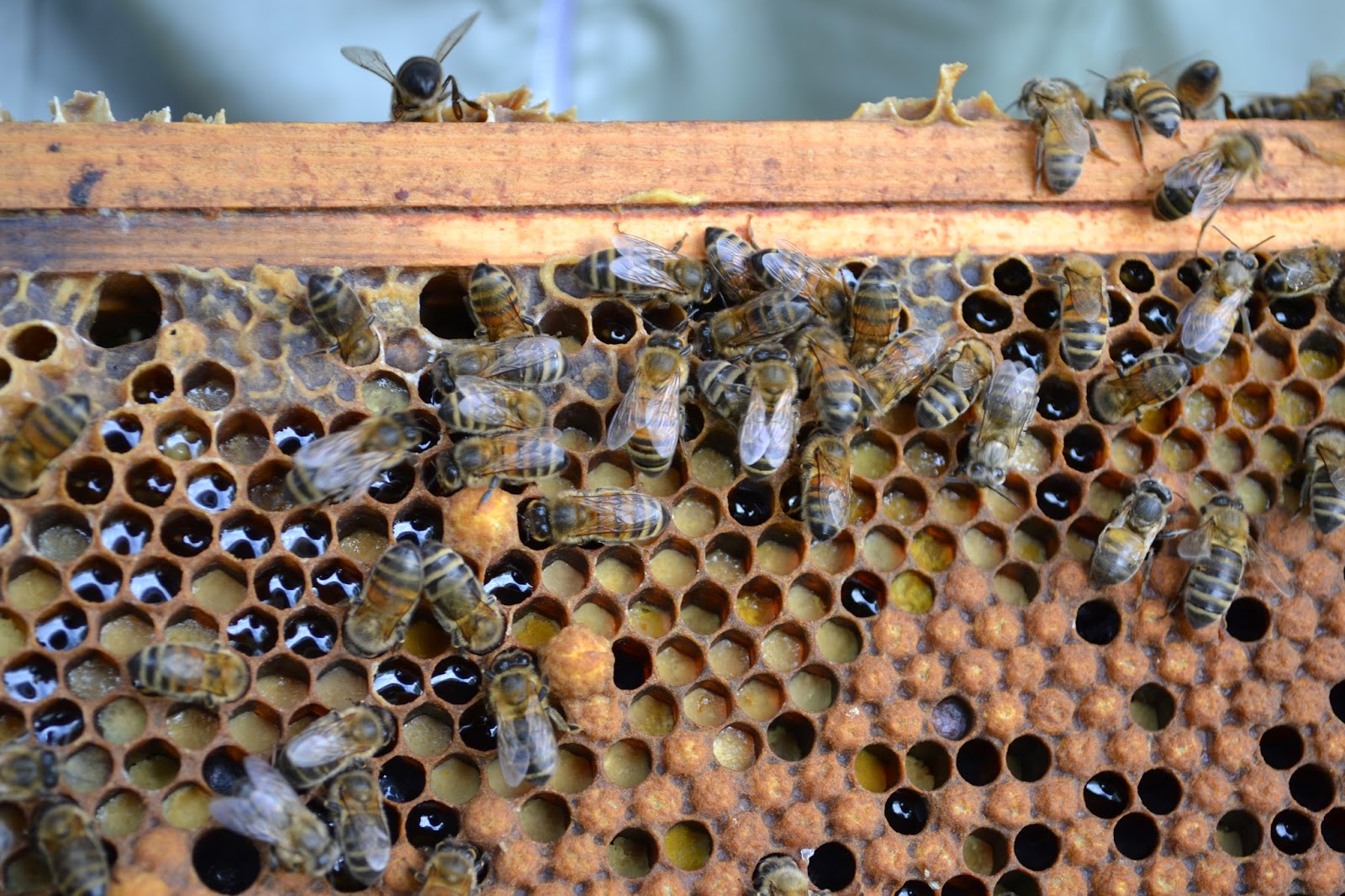Because we brought in hives from outside the area(in an area with more disease than here) it was important to get the Bee Inspector in asap. The 2 notifiable diseases which are brood diseases(American Foulbrood and European Foulbrood) are usually transmitted by humans and their activities so this would be a prime time for infection of my existing colonies if there was any sickness in the hives. The Bee Inspectors are available as a service of DEFRA-they cost you nothing and it is always advisable to get them in. My experience has always been good. They can often come out to see a problem quicker than you can say G.P! They don't criticise or judge the way you keep your bees and are there purely to check the health of the hive.
 |
| Edmund examining the Langstroth |
 |
| The comb is broken where we pulled the roof off. |
Looking down through the Langstroth frames we can see the frames of the Warre below. At this stage it's not possible to see what they are doing but we hope they are drawing out the wax to form comb.
The picture on the right shows a section of a frame with the typical distribution of brood in the centre surrounded by stores-pollen then honey. The wax is dark brown suggesting that this is comb which has been used before and is stained by the moultings of pupae.
Again on the left we see the typical 'biscuit' coloured cappings of the worker brood surrounded by cells of pollen surrounded by cells of nectar waiting to be capped as honey.Note the different colours of pollen from different sources.Below is a link to a very good pollen chart which is laid out in seasons to help identify what the bees are bringing in.

Capped honey looks different to capped brood and weighs a lot more. This is still the dark, re-used comb of the Langstroth.
On the left is one of my own first natural bee keeping frames. Note the brightness of the clean, new wax. On the far right we can see the domed caps of the larger drone(male) larvae and further to the left we see the even, flat cappings of the worker(female) larvae.
The above picture is of another one of my natural bee keeping frames and shows a lovely, consistent pattern of brood in the centre of freshly made wax comb. Clean and hygienic, this sheet of comb has been drawn entirely from a bead of wax along the top bar.






No comments:
Post a Comment